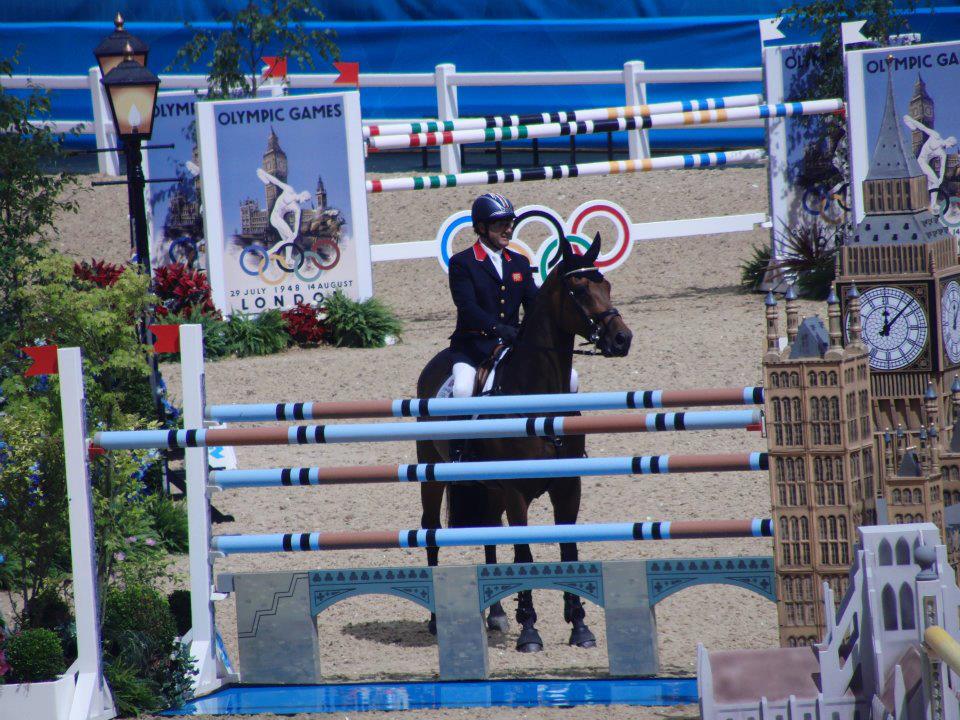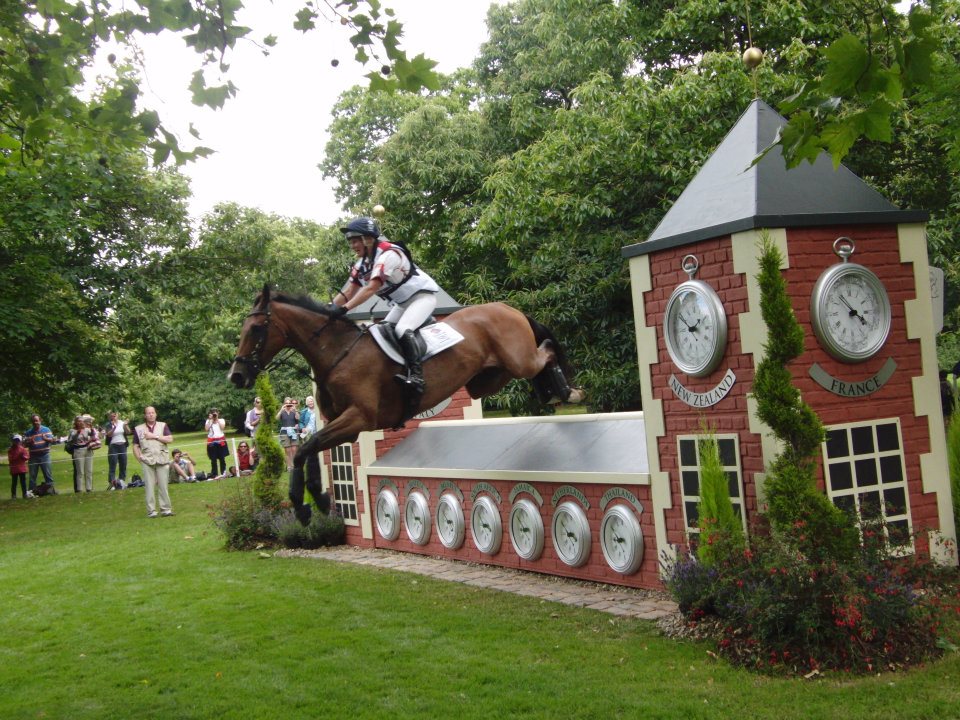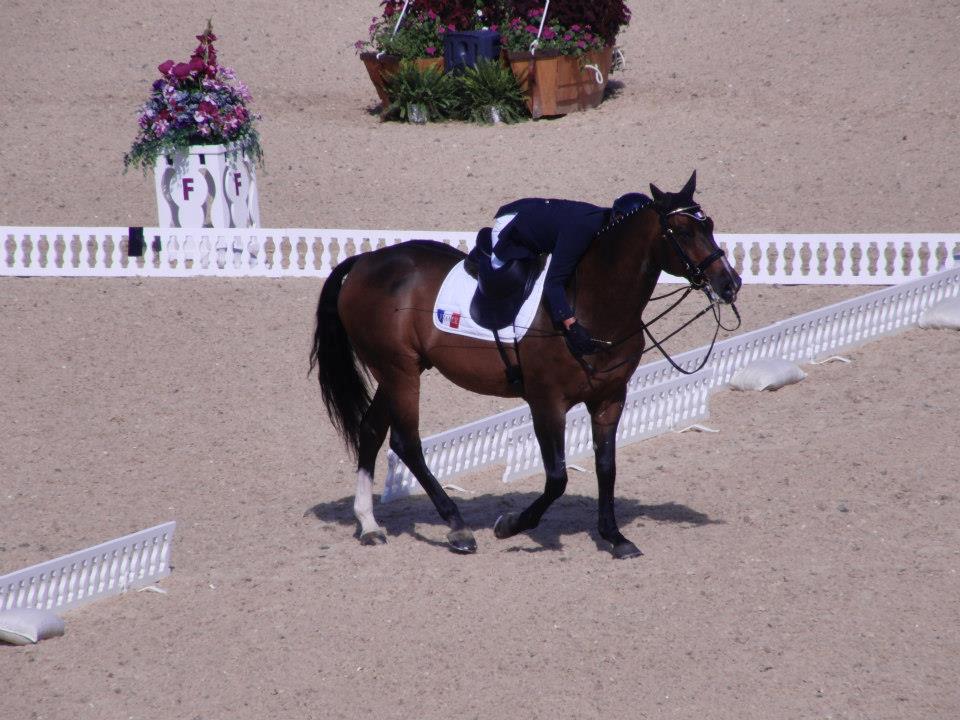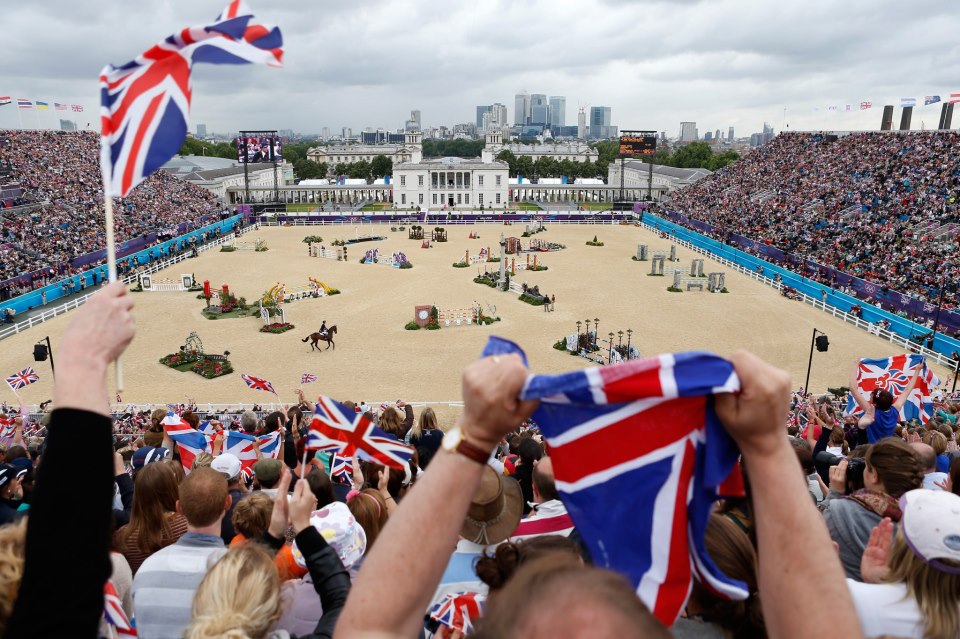I am delighted to be collaborating with Little Manor Equestrian Centre to offer ‘Sport Psychology workshops for Riders’ in Reigate. The first two workshops are scheduled for the evenings (7-9pm) on Thursday 16th April and Thursday 30th April. Check out the Events page to book on.
 Jo Davies
Jo Davies
JDPsychology Groom of the Year Award 2014
 I am delighted to be sponsoring the ‘Groom of the Year’ Award 2014, in connection with the South East Eventers League (SEEL). Nominations must be made by 1st November 2014 and a nomination form can be downloaded here.
I am delighted to be sponsoring the ‘Groom of the Year’ Award 2014, in connection with the South East Eventers League (SEEL). Nominations must be made by 1st November 2014 and a nomination form can be downloaded here.
Previously a working pupil for an international event rider, I am well aware of the many demands (early starts, plaiting, studding up, tack cleaning, lunging, dealing with riders/owners, having everything ready in the right place at the right time…and much more!) of grooming.
SEEL would love to receive nominations from any BE/SEEL registered riders who couldn’t do without their groom! Regardless of whether your groom is a professional who juggles getting five horses ready at events, or a loyal family member/friend who has gone beyond the call of duty to support you across the season; get in touch if you think your groom deserves recognition for the hard work they put in!
The award winner will receive a free ticket to the SEEL ball on 22nd November 2014, a trophy, and two 60-minute sport psychology sessions with Jo Davies. The sessions can be used by the prize winner, passed onto their rider, or used as a joint session if preferred!
Don’t forget to get your entry in by the 1st November 2014 deadline!
Would you like to be sponsored by JDPsychology in 2014?
I am really excited to be offering a sponsorship package to a competitive rider for the 2014 season!
JDPsychology_Sponsorship (click to open a downloadable sponsorship pdf)
You should be an equestrian competing in either British Eventing, British Dressage, or British Showjumping, at any level (amateur or pro). If you think that sport psychology input could help you in 2014, we would love to hear from you!
The sponsorship package will include:
- Six individual 60-minute sport psychology sessions across 2014
- A personalised JDPsychology saddle pad and polo shirt
All you need to do to apply is complete a short survey at: https://www.surveymonkey.com/s/YDVPWXZ (copy and paste link into your browser)
The closing date for applications is 12:00 midnight on Wednesday 7th May 2014. The sponsored rider will then be announced during the week commencing 12th May 2014 (all applicants will be informed of the result via email). Please direct any questions to jo@jdpsychology.co.uk
Terms and conditions
- The final decision regarding selection of the sponsored party lies with JDPsychology.
- Content of the sport psychology sessions will be kept entirely confidential by JDPsychology.
- The sport psychology sessions will be arranged at/on mutually convenient locations/dates for JDPsychology and the sponsored party across 2014. In the event that travel distance is an issue, sessions can be arranged via skype.
NEW sport psychology workshop for riders, 1st March ’14
I’m looking forward to running another workshop for riders in association with British Eventing on Sunday 1st March 2014, in Pulborough, West Sussex.
The session will focus on combating nerves and building confidence, and is applicable to both eventers and competitors within other equestrian disciplines, as well as recreational riders.
Book via the BE website here (you need not be a member to come along).
I hope to meet you there!
Behind the scenes at Greenwich Park, London 2012
A new year, and the Sochi 2014 Winter Olympic Games is fast approaching. In fact, UK Sport revealed yesterday a goal of three to seven medals for Britain’s Winter Olympians; equating to a potential new medal record. I’m looking forward to catching some of the action! With this in mind, the hype of the Summer Olympics of London 2012 suddenly seems like a very long time ago. I thought I’d dedicate a blog to stirring up some memories about my experience as a LOCOG team member based at Greenwich Park.
I wasn’t actively job-hunting when I spotted an advert for an Equestrian Group Admin Leader role with LOCOG back in July 2011 (although granted, I certainly wasn’t in love with my office job). My first thought was: ‘What a fantastic opportunity!’, and my second: ‘But there’s only one hour until the application deadline!!!’. Cue a frantic search for my CV and rapid completion of various forms. Nevertheless, my application was in – with minutes to spare – and my fingers and toes were crossed.
Fast forward to April 2012 (‘fast’ being a turn of phrase; those eight months waiting to start actually went by incredibly slowly) and I was undertaking my first day as a LOCOG employee at the Canary Wharf offices. It was here that each and every sport (26 Olympic and 20 Paralympic) planned each and every minute event detail to the nth degree. Within the equestrian corner, our team covered all bases: Sport, logistics, sustainability, veterinary, transport, workforce, officials, spectator experience, and more. My own role was positioned within the equestrian sport competition team and involved leading on all things administrative, from preparing presentations for Chef d’Equipe meetings or ordering fly traps for the horses’ stables, to arranging flights for the equestrian governing body, the ‘Federation Equestre Internationale’. I also led on Games Maker communications, which included rostering an insane number of Games Maker shifts and designing training materials and news bulletins. The latter made me privy to a surprisingly large number of quite useless facts about the equestrian events (although if I ever had to choose a Mastermind topic….). Who knew that over 70,000 carrots were ordered for the Olympic horses, who in turn produced over 200 tonnes of manure?!
As the Games inched closer, the size of our team grew bigger; as did competition for desk space, our wardrobes (filled with London 2012 kit!), the buzz in the office (contagious!), and our enthusiasm to get out onto venue. Finally in July 2012, I set up the admin camp at Greenwich Park, now joined by a team of fantastic admin Games Makers. The park had been transformed beyond belief, and by the time horses and riders began arriving in late July they had access to a 23,000-capacity main arena, six training arenas, a gallop track, a 3.5 mile cross country course, and state of the art stables.
Days on venue could be long and tiring, but never boring! There was always a meeting to attend, a workforce shift to fill, a competition report to write, or an unexpected errand to run (I vividly recall the shock of one service station sales assistant who I asked to help me collect 80 sandwiches, packets of crisps, and bottles of water to feed Games Makers whose lunches had not materialised – I think we left them rather short in supply!). There are so many on-venue stories I could write about, but what really struck me about the Games as a whole was how people were brought together (‘group cohesion’ in psychology talk) by a common goal; be that entertaining the world with the ‘greatest show on earth’ or striving for a podium spot. A few examples include:
- All about teamwork. What became clear as workloads ballooned behind-the-scenes and hours of sleep diminished, was that the show would not go on without a huge amount of team work. It was fascinating to see how people pulled together under pressure on venue, both within the sport competition team and beyond, for example: The passion with which Games Makers embraced their roles, the conviction with which Team Leaders put forward their riders’ views at briefings, the camaraderie between the GB riders, and the enthusiasm with which the home crowd cheered them on.
- A home advantage? With respect to my last point, I was astounded on cross-country day by how deafening the crowds were when GB riders were on course (really, it made crowds at Badminton – one of the UK’s largest horse trials – sound muted in comparison). In fact, the riders reported they could not hear the beeps of their stop watches, commonly used to monitor progress in relation to the time limit. Our riders described the home crowd as ‘incredible’ (Zara Phillips), ‘emotional’ (Mary King), and ‘supportive’ (Laura Tomlinson). It certainly seems that rather than distracting riders, the home crowd actually provided a source of motivation instead.
Trusting partnerships. It was impossible not to wonder at the rapport between competitors and their horses. In a high-pressure environment – with crowd sizes far bigger than most horses would have experienced before – these animals had to ignore their natural prey instincts (i.e. to flee!) in the stadium and work in partnership with their rider. The Paralympic riders in particular demonstrated that harmony was not achieved through strength, but via trust.
- Londoners breaking the silence. I have never been so popular as when I wore my purple Games Maker kit. My ‘uniform’ broke down that unwritten public transport rule of ‘Don’t speak to/acknowledge/look at strangers’. I have only known this to happen once before in London, when it snowed heavily in 2009. Us Brits were genuinely proud of our collective hosting efforts and this prompted a strange phenomenon on the underground, otherwise known as ‘talking’.
It’s hard to sum it all up really. After hosting 276 horses, spending 45 days on venue, organising 18 days of competition, watching 17 medal ceremonies, and cheering on 8 GB Gold team and individual medallists, it was suddenly all over. What I will say is that it was one of the most challenging but also most rewarding experiences of my life; an absolute privilege to work with an incredible team, and I would do it all again in a second. I might leave more than an hour to sort out my application next time though…
The Winter Olympics 2014 start on 7th February. Best of British luck to all our athletes!
What do Monopoly and calories have in common?
Eating, drinking, and board games are big in my family on Christmas Day. Apparently, this isn’t unusual: 50% of Britons gobble up double their recommended calorie intake on 25th December (alcohol often tipping the calorie balance), and 75% sit down to play at least one board game. In my experience, neither of these things encourages festive peace and goodwill. Apparently, ‘Monopoly’ is the likeliest game to spark a Christmas Day row, and I would hazard a guess that this probability increases in direct proportion to the number of glasses of [insert drink of your choice] consumed.
So, anyone for an orange juice and a game of Snakes and Ladders? Hmmm.
Monopoly and calories have more in common. First, the phrase ‘Get out of jail free’ seems applicable to both Monopoly’s Community Chest and to the justification we use to warrant consuming anything and everything in the house on Christmas Day simply because, well, because it’s Christmas Day (free calories, right?). Second, both activities are generally undertaken whilst sitting indoors.
So what does this mean? (I will get to my point eventually – this blog was/is supposed to be about outdoor exercise!).
Essentially, this means that on Christmas Day we Brits tend to eat, argue, and remain inactive on the sofa in excessive amounts. Often, the good intention to set out on a post-lunch walk is overridden by bad weather, feeling ‘too full’, a long-drawn-out game of Monopoly, a family argument…
Granted, it’s Christmas Day. But ask yourself: How long do your Christmas ‘Get out of jail free’ excuses last for? And what if that foray outside your front door was just what you needed?
Increasingly, research is showing that outdoor physical activity has significant advantages in comparison to no exercise (well yes, Captain Obvious) but also to exercising indoors. First there’s the psychological benefits. Recent studies1 have involved volunteers completing two walks of the same time or distance, one inside (usually on a treadmill) and one outside in the fresh air and natural scenery. In virtually all of the studies, the volunteers reported enjoying the outside activity more. Further, volunteers scored higher on measures of vitality, pleasure, enthusiasm, and self-esteem, and lower on measures of tension, depression, and fatigue, after walking outside. A study with older adults2 additionally revealed that volunteers who exercised outside were more likely to exercise longer and more frequently (on average, 30-minutes more per week) than those who exercised indoors. The physiological link between outdoor exercise and the dispositional and motivational benefits outlined is currently unclear. However, some studies3 have found that following outdoor exercise, individuals have lower blood levels of cortisol, a hormone related to stress, than those who have exercised indoors.
Second, there are distinctive physiological benefits to exercising outdoors. For one thing, even subtle changes in wind resistance and terrain tend to make outdoor exercise more strenuous. Studies comparing the exertion of running outside with running on a treadmill4 have found that outdoor runners expend more energy to cover the same distance. This same pattern is mirrored in cycling, where wind drag demands higher energy expenditure when cycling outside for 25-miles, compared with riding the same distance on a stationary exercise bike5.
Collectively, the research take-home point seems to be that exercising outside can (a) improve our mood and (b) burn off our Christmas dinner more quickly. So, arguably, another link between Monopoly stresses and festive calories?
As a final thought, what also strikes me is that the research suggests that you don’t have to walk (or even run!) any great distance to experience the psychological benefits of outdoor exercise. Incorporating a brisk 30-minute walk (to the shops, to see a friend, with your dog) into day-to-day activities can be planned easily; is free and accessible; and, it seems, can be highly beneficial should you have just landed on Mayfair three times running, or have over-indulged this Christmas!
References
1. Thompson Coon, J., Boddy, K., Stein, K., Whear, R., Barton, J., & Depledge, M. H. (2011). Does participating in physical activity in outdoor natural environments have a greater effect on physical and mental wellbeing than physical activity indoors? A systematic review. Environmental Science and Technology, 45 (5), 1761-1772.
2. Kerr, J., Sallis, J. F., Saelens, B. E., Cain, K. L., Conway, T. L., Frank, L. D., & King, A. C. (2012). Outdoor physical activity and self rated health in older adults living in two regions of the U.S. The International Journal of Behavioural Nutrition and Physical Activity, 9, 4615-4625.
3. Logan, A. C., Selhub, E. M. (2012). Vis medicatrix naturae: Does nature ‘minister to the mind’? Biopsychosocial Medicine, 6 (11), 1751-1759.
4. Jones, A. M., & Doust, J. H. (1996). A 1% treadmill grade most accurately reflects the energetic cost of outdoor running. Journal of Sports Sciences, 14 (4), 321-327.
5. Jobson, S. A., Nevill, A. M., Palmer, G. S., Jeukendrup, A. E., Doherty, M., Atkinson, G. (2007). The ecological validity of laboratory cycling: Does body size explain the difference between laboratory- and field-based cycling performance? Journal of Sports Sciences, 25 (1), 3-9.
Equestrian Workshop with British Eventing – Book now!
I am running a sport psychology workshop for equestrians this Saturday 23rd November. You can book online via the link below – I hope to see you there!
‘Head for success this winter’ – Sport Psychology Workshop with British Eventing
90-minute unmounted workshop at Wellington Equestrian, Hants. Open to British Eventing members and non-members. Click here for more information and to book your place!
Something to ‘slim into’
Do you ever remember a parent buying you school uniform that was at least two sizes too big because you’d “grow into it, darling”? In my case, my mother’s estimations were particularly over-enthusiastic and I spent the first five years (i.e. all) of secondary school in a blazer that would have been more suited to a six-foot rugby player. Or at least that’s how it felt.
Buying clothes for ourselves as a ‘grown-up’ however is a whole different ball game. For women, the buy to grow into mantra is flipped on its head entirely. In fact, a recent online article reported that 28% of women have bought items that are too small for them as inspiration to slim. I do wonder whether they hide their new item from their partner or whether they showcase their amazing bargain (!) before revealing that they intend to “slim into it, darling”.
My question is, does buying clothes that we simply cannot squeeze into before losing 6lbs act as a motivation to lose weight? – be that by adopting an exercise regime or a healthy eating plan, or both. Can I, for example, buy a spangly new dress for my work Christmas party and expect instant inspiration to drop a dress size in four weeks?
I’m afraid the short answer is no.
One in six British women (17%) are clinging onto clothes they bought too small, in hope that it would spur them on to slim down, but to no avail. These women were on average aiming to lose a stone in weight. The result is that the typical British woman harbours £173 worth of clothes that she has no intention of wearing but can’t bear to throw out. The latter figure I’m sure is inflated by unwanted gifts, lost receipts, impulse buys and the like (possibly clothes hoarding?), but my point is: Statistically, the act of buying clothes too small in itself is not necessarily good for our figures or for our purses.
Nonetheless, presumably some women did slim into their purchases. The 11% of women who ‘purchased too small’ but don’t still have these outfits in their wardrobe are not accounted for. We have to assume that either they did reach their target weight or that they passed the items onto a friend/charity shop or flogged them on eBay. If the former and more optimistic account is true, then my next question is: HOW did these ladies use their shopping ‘habit’ to their advantage and lose weight? And how can others do the same, should they spot the Christmas party dress or January sales bargain and opt for a ‘snug’ fit? I’ve outlined five key motivation-building pointers below:
1. Set goals. Not just a vague goal (“I’ll fit into that dress at some point, maybe next Summer”). Set a main longer-term goal that determines WHAT you want to achieve, e.g. “I will lose 3 inches around my waist and look great in that dress by my birthday”
Then set short-term goals that will determine HOW you will get there, e.g. “I will…go jogging with a friend two mornings per week….go swimming one evening per week…drop my daily dessert” and so on.
Write these goals down (it will help you commit to them), and make sure that they fit into the SMART template below:
Specific – Get as much detail into your goals as possible
Measurable – How many inches will you lose? How many miles do you want to be able to run, in what time?
Agreed – YOU should set these goals (with guidance if needed, e.g. fitness trainer, nutritionist)
Realistic – Being over-ambitious can be de-motivating, so set moderately difficult goals that will challenge but not overwhelm you
Time-based – Set a target time, e.g. lose X lbs by X date; be able to run X miles in Y minutes by Z date
2. Work with someone else. Exercising or setting healthy eating plans with a friend can provide motivation via useful advice, encouragement and support, enjoyment, and even friendly competition.
3. Hang your clothes somewhere prominent. Don’t just chuck them in the back of your wardrobe, use them as a visual aid. Every time you see them, they’ll drive you towards your target and remind you of your progress.
4. IMAGINE wearing those clothes. The image you create must be positive, e.g. wearing your new outfit to a friend’s party and feeling fabulous. Make this picture as vivid as possible. How will you feel when you wear it? What will your partner/trusted friends say? Try using different perspectives – first and third person. The mind can be an incredibly powerful motivator.
5. Monitor your progress. Either write in a diary or on a calendar, use an excel sheet or an app, or chart progress on a graph. This will keep you focussed on your goals and is a great way of logging and reflecting on your progress.
What we can learn from the ‘Iron Man’
Last week jockey AP McCoy celebrated the incredible feat of totalling 4000 jump racing victories. To put that into perspective, his closest rival is Richard Johnson on 2,600 winners. McCoy has also demonstrated ultimate consistency by achieving the no.1 spot in the PJA rankings for the last 937 consecutive weeks (I’ll save you the maths, that’s 18 of your birthdays!).
The following statistic might therefore surprise you. McCoy has also fallen off an estimated 1000 times and broken over eleven different bones in his body (some bones more than once!). This seems paradoxical; to be at the top of your game, yet suffer so many ‘batterings’ (falling at 30mph speeds with a field of up to 20 or so horses and jockeys behind you isn’t my cup of tea). To some extent, falling off – and brushing yourself off! – is a setback that’s part and parcel of jump racing. Except that this particular setback seems to affect some jockeys more than others, both physically and mentally. It certainly doesn’t deter McCoy one jot according to Martin Pipe, champion trainer who employed McCoy for nearly ten years.
“I remember one race early on where the horse slipped up on the bend at Chepstow, AP fell and the whole field galloped over him. He really got flattened… Lo and behold, two races later, out came AP to ride Or Royal and duly won on it…He really is an iron man.”
So what can we learn from McCoy’s success?
What struck me is the ‘unquenchable thirst’ that people allude to when describing McCoy; his ‘will to win’. ‘hunger’ and ‘drive’ (see link below). In psychology we talk about two kinds of motivation – extrinsic and intrinsic. Extrinsically motivated athletes are driven by external means, such as winning, money, goods, and recognition. In contrast, intrinsically motivated athletes are motivated by improving and developing themselves and often find the task itself (in this case race riding) inherently enjoyable.
Research would suggest that a mix of extrinsic and intrinsic motivation is a powerful combination in athletes. Such an athlete would have a natural will to win, yet also be motivated by improvement and enjoyment of the sport (important because we cannot win every time, however good we might be!). This seems to be the case for McCoy, who is fiercely competitive, his sporting mantra: “I don’t see the point of doing anything if you can’t win”. Nevertheless, he also hints at intrinsic drives: “I love what I do. I couldn’t think of anything worse than having to retire”.
Perhaps then – alongside a lot of talent and a bit of luck – McCoy has superior determination to his rivals. Picture this: At Southwell racecourse in 2002, McCoy fell at the 10th fence. His horse disappeared rider-less into the distance. Instead of calling it a day, McCoy ran after the horse, which was caught by a groom. He remounted and continued the race, albeit now a long way behind the pack. Incredibly, every other runner proceeded to fall and McCoy won the race. At the time, this had never been done before (and never will again since re-mounting is no longer allowed). Still, I’d hazard a guess that there wouldn’t be many other jockeys out there who would have gotten back on.
I’ll leave you with a link to the following short clip of sportspeople paying tribute to one of jump racing’s legends.
http://www.horseandcountry.tv/episode/stars-congratulate-mccoy-after-4000th-win





